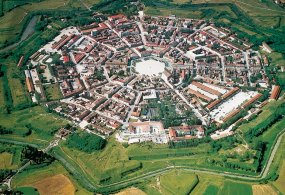 Hotel Luna
***
The Hotel Luna enjoys a splendid...
Lungomare Trieste, 68 -
Sabbiadoro
Hotel Luna
***
The Hotel Luna enjoys a splendid...
Lungomare Trieste, 68 -
Sabbiadoro
 Rossini Resort
****
Located in a quiet area, right...
Via Adriatica, 32 -
Sabbiadoro
Rossini Resort
****
Located in a quiet area, right...
Via Adriatica, 32 -
Sabbiadoro
 Hotel Villa Franca
**
Situé au cœur de Lignano...
Lungomare Trieste, 118 -
Sabbiadoro
Hotel Villa Franca
**
Situé au cœur de Lignano...
Lungomare Trieste, 118 -
Sabbiadoro
 Hotel Medusa Splendid
****
Hotel Medusa Splendid is a marvellous...
Raggio dello Scirocco, 33 -
Pineta
Hotel Medusa Splendid
****
Hotel Medusa Splendid is a marvellous...
Raggio dello Scirocco, 33 -
Pineta
 Hotel Cristallo
***
In the greenery of Lignano Sabbiadoro,...
Via Tirolo, 2 -
Sabbiadoro
Hotel Cristallo
***
In the greenery of Lignano Sabbiadoro,...
Via Tirolo, 2 -
Sabbiadoro

Region: Friuli-Venezia Giulia
Elevation: 27 m a.s.l.
Area: 13,32 km²
Population: 5.396 (as of March, 2009)
Time zone: CET, UTC+1
Gentilic: Palmarini
Patron: St. Justina of Padua
Patron-Day: October 7
The situation of the region, after the loss of Gradisca in 1511, was characterized by a series of borders named "Leopard skin", where enclaves of Venetian Republic were in the territories of Austria and imperial possessions were in Venetian territories.
To strengthen the defenses on the territory of Friuli, Venice decided to build from the beginning a fortress in the centre of the Friuli plan, which could stop the raids of Turks and stem the expansionist intentions of the Archdukes. To realize this project, took part a team of engineers and expert architects.
October 7th, 1593 the first stone was laid for the construction of the new fortress: Palma. During the Venetian period, the fortress was equipped with two circles of fortifications with curtains, bastions and moat to protect the three entrances to the city. Palmanova was conceived especially as war machine: the number of the ramparts and the length of the sides were set according to the range of the cannons of the time. In 1797 an Austrian major entered with a trick in the fortress and it conquered Palmanova, but Austrians did not have time to enjoy the conquest, because French regained immediately the city.
After the Campoformido Treaty, Palmanova came back to the Austria for some year; in 1805 French took possession of the star-shaped city and in this period was realized the third circle of fortifications. In 1814 Palmanova returned to the Hapsburg. During the Austrian rule (1815-1866) was built the Teatro Sociale, destined to become a hot house of Risorgimento values, so that in 1848 the fortress rose up against the Austrians.
In 1866 Palmanova was annexed to the Italy Kingdom. During the First World War the fortress was refueling hub for troops on river Isonzo; after Caporetto, Palmanova was burned by Italian troops in retreat. In the Second World War, the Archpriest Giuseppe Merlino made the Germans withdraw from the decision to raze the city. By Decree of President of Italian Republic, in 1960 Palmanova was declared "National Monument".
Still today the entrance to the city of Palmanova is possible through the three monumental gates, the only building visible from outside the fortress that still retain some original architectural characteristics. Fro its structure and composition of the three circles of defense walls, the city offers the possibility to see the development of the fortifications during the centuries.
In the city, Piazza Grande is in front of you. A perfectly hexagonal square, in the centre of which stands a base in Istria stone, from which rises the high standard, from immemorial time witness of the historical events of the fortress and symbol of the fortress itself. On the square overlook the most important buildings, including the Cathedral of Palmanova, the best example of Venetian architecture.
Among the museums, we suggest the Historical Civic Museum, an important point for information about the city, for events and excursion in surroundings. It also contains an interesting collection of antique weapons, coming from Castel Sant'Angelo in Rome.
To list all the interesting places of Palmanova is very difficult, because the entire city is a monument: every house, street, entrance doors. Everything is historic and relates the life of the city. Starting from Porta Udine, where you can see the natural place of the big wheel for the lifting of the drawbridge, you turn right at the first cross and take Strada delle Milizie. This street ran in a circle near the walls and it allowed a rapid movement of the troops and materials. On the street overlook the Military Quarters and buildings for artillery.
Along the itinerary you will see the Powder Magazine and the Defensive Barrack of Napoleon, the Laboratory of Powders, the Sant'Andrea Quarters that housed the cavalry and today, after a careful restoration, is occupied by residential buildings, the San Zuane Quarter for the infantry and the Venetian Powder Magazine, the oldest building of the city.